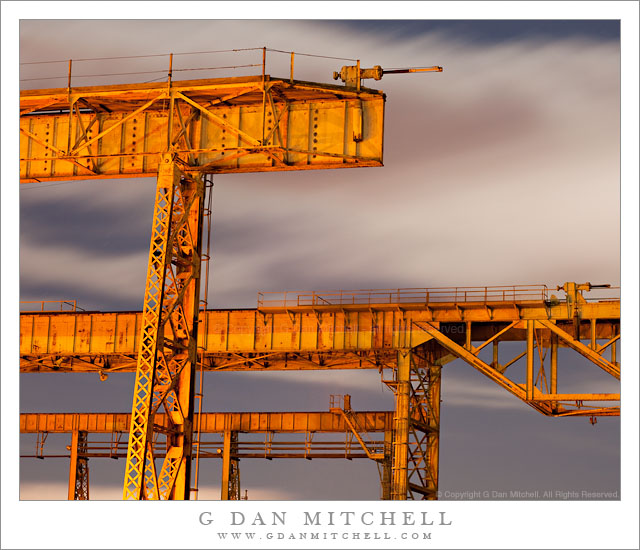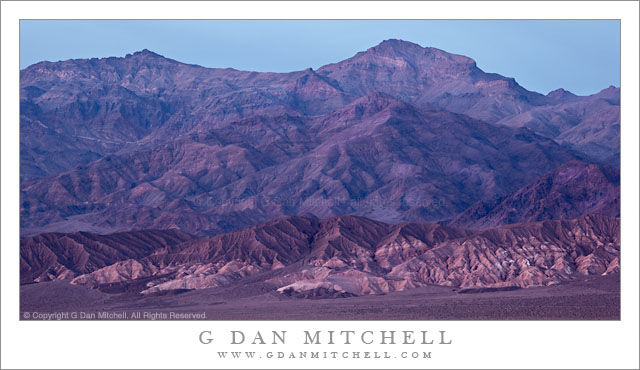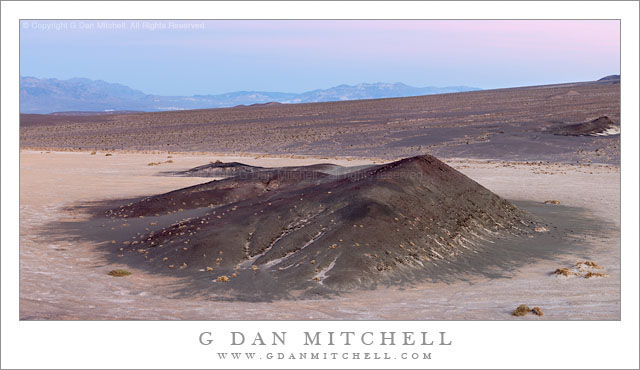Yellow Buildings, Fence, and Night Sky. Mare Island Naval Ship Yard, Vallejo, California. April 16, 2011. © Copyright G Dan Mitchell – all rights reserved.
Night photograph of abandoned industrial buildings from the historic Mare Island Naval Ship Yard.
The building on the left is sometimes known as the “UFO Building” – not because of anything that might be stored inside, but because of a shadow in the shape of a “flying saucer” that forms on one of its walls. I thought it was the only one until I took this photo in which you might spot another saucer-shaped shadow on the wall of the building at the right.
This scene is not a particularly unusual one at the historic Mare Island Naval Ship Yard, a place that is full of old industrial buildings left over from the long ship-building history on this island. Many of the old buildings are now in a state of somewhat arrested development, but they certainly show the signs of age and lack of care – lots of boarded up buildings, peeling paint, warnings about hazards of various kinds, and so forth.
Most of the light in this photograph comes from a bank of strong security lights on the exterior of a more modern nearby building, and the yellow color is a result of the type of lighting that is used. There is also a bit of full moon light in the shadows and on the bit of cloud at the upper right, and this also explains the lighter coloration of the sky. When making night photographs in a place like this, I feel comfortable about not really trying to “capture” an objective reality of the place. To be blunt, that is pretty much impossible. First of all, it is actually so dark in many of these places that it takes a while for your eyes to get used to it. Secondly, there are so many varied light sources with so many different colorations that it is essentially impossible to “color correct” the scene – though I’m not even quite certain what it would mean to do that in a scene that we really can’t “see” with our own eyes.
The idea in my night photography is not often to capture the scene as it “is,” but instead to reflect the way “the camera sees,” a way of seeing that is quite different from our native modes of seeing. Things that occur over long periods of time (exposures measured in minutes) appear in a single frame, sometimes objects lose their definition as shadows move and wind blows, stars create streaks in the sky and passing clouds blur, and the colors are far from “natural.”
G Dan Mitchell Photography | Flickr | Twitter (follow me) | Facebook (“Like” my page) | LinkedIn | Email
Text, photographs, and other media are © Copyright G Dan Mitchell (or others when indicated) and are not in the public domain and may not be used on websites, blogs, or in other media without advance permission from G Dan Mitchell.




